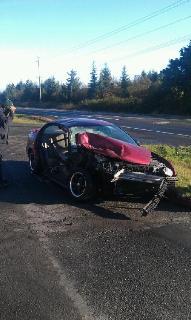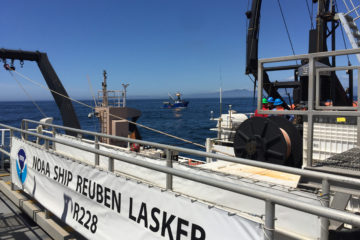Ocean Companies Safety Tip of the Week – Black Ice
Driving during the cold months is not about dealing with snow; Ice on the road is the real threat. Black ice, in particular, is dangerous because it’s invisible. However, you can protect yourself by understanding and knowing how to deal with this issue. While knowing how to drive on it remains a number one priority, here are some other things to do:
- Drive below the speed limit. Don’t try to speed, it will take away any control you might have.
- Don’t tail gate.
- Keep your windshield clear of anything that may prevent you from seeing properly. Use an ice scraper to scrape ice from the windshield before you start the car as using your windshield wipers will cause damage to the wiper blades.
- Turn your headlights on early to help detect a sheen from the black ice.
- Make sure your tires have good tread. Worn tread causes accidents in any condition. Consider having snow tires during the cold months.
- NEVER drive in potentially icy conditions with your cruise control active!
- If you have ABS brakes, know how they feel when they engage so you don’t panic.
- Avoid sudden movements. Quickly turning your tires, accelerating or braking can cause you to lose traction and/or may cause over compensation.
- Have snow tires fitted before the temperatures drop low enough to cause black ice.
- Stay off the phone and don’t mess with the radio. Pay attention to the road or you may wreck!
Understand black ice is like regular ice. It’s called “black ice” because it tends to look like the rest of the pavement on the road, although in reality, it’s actually clear. Black Ice forms without creating bubbles, which allows it to blend in with any surface it forms over. It is dangerous precisely because it’s hard to detect in advance.
Know where to expect black ice. Black ice usually forms just about the freezing point. It sometimes forms due to the heat of the tires on the road coupled with freezing temperatures. It forms most commonly at night or in early morning. It tends to be found along tree lined routes that see little or no sun and bridges, overpasses and under overpasses a treacherous due to cold air being able to cool both the top and under the bridge or overpass, bringing about faster freezing.
Know how to see black ice – sometimes. At night, it is nearly impossible to see black ice, however, at dawn, daylight, and dusk you can usually see, if you’re looking for it, a glossy surface. The road will be a dull black color, like an unkempt black cars paint job and the black ice will be like a nice new black car’s shiny surface. You won’t always see it, but looking for it can’t hurt. It may also help you stay focused in less than ideal driving conditions.
Practice driving on slippery surfaces. If possible, practice driving on ice in a safe surrounding. Find a nice, large empty parking lot with ice on it. Drive on the ice practicing braking. Understand how your car feels and handles in these conditions.
Deal with a black ice encounter. If you do hit black ice, your first reaction must be to remain calm and avoid overreacting. Black ice is often patchy and hopefully your tires will soon find traction. The general rule is to do as little as possible and allow the car to pass over the ice without hitting the breaks and trying to keep the steering wheel straight. If you feel the back of the car sliding left or right, make a very gentle turn of the steering wheel in the same direction the rear of the car is moving. If you steer in the opposite direction, you risk skidding or spinning out. You may have to decide if you should stay in the safety of your vehicle to protect you from other vehicles spinning out of control, or leaving your vehicle to a place where you are out of harm’s way.
Slow down by de-accelerating. Take your foot completely off the gas pedal. Do not hit the break! Slowing down will give you more control and prevent needless damage. If you have the ability, shift into a lower gear for more control.
What to do after a black ice encounter: Chances are you will be rattled, but panicking won’t help. If you must keep driving, do so slowly. Get off the road as soon as possible and take a few minutes to recover and feel less panicked. If possible, have a hot drink like cocoa, coffee, or tea to help you relax before driving again.
Source: wikiHow – How to Drive on Black Ice
– Cheire (drive safely!)



